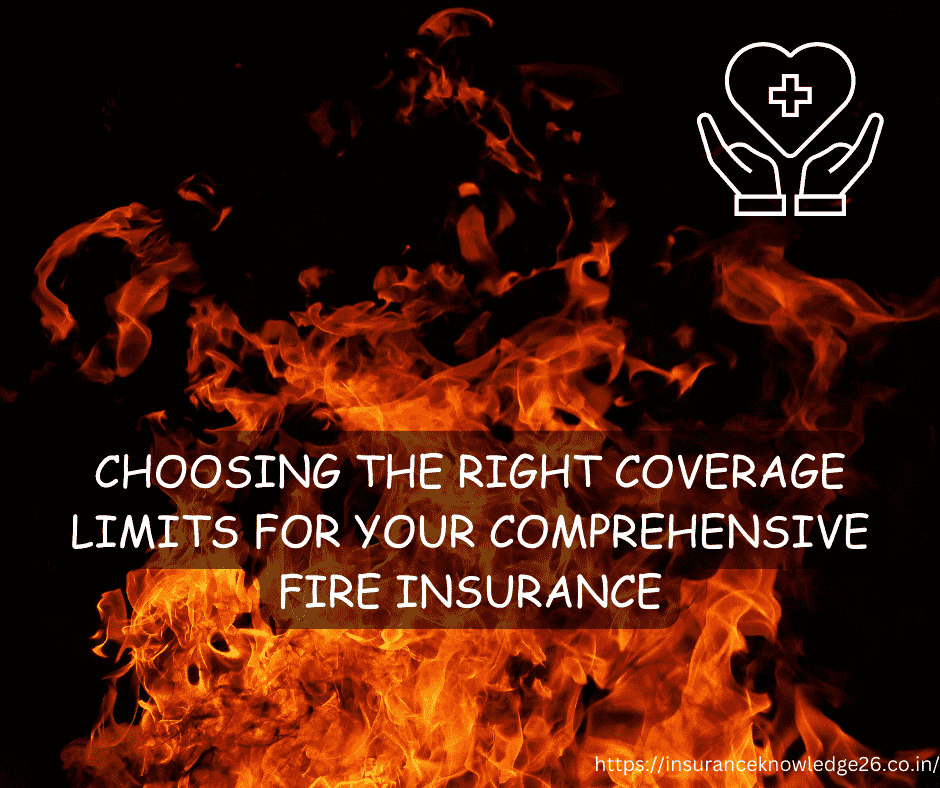Choosing the Right Coverage Limits for Your Comprehensive Fire Insurance
Fire Insurance plays a crucial role in safeguarding homeowners and businesses against the devastating consequences of fire incidents. A comprehensive fire insurance policy not only protects the physical structure of the property but also provides financial security to cover damages to belongings and liabilities arising from fire-related accidents. When purchasing fire insurance, one of the most critical decisions is determining the appropriate coverage limits. In this article, we will delve into the key factors to consider when choosing the right coverage limits for your comprehensive fire insurance.

A. Understanding Fire Insurance Coverage Limits
Coverage limits refer to the maximum amount an insurance policy will pay out in the event of a covered loss. For fire insurance, these limits are established based on the property’s value, the cost of rebuilding or repair, and the value of belongings inside the property. Choosing the right coverage limits is a balancing act – inadequate limits may leave you financially vulnerable, while excessive limits may result in unnecessary premium costs. Therefore, it is essential to evaluate various factors to make an informed decision.
Property Value Assessment
The first step in determining the appropriate coverage limits is to assess the value of your property. This evaluation should include the cost of the land, as fire insurance typically covers the structure and not the land itself. Consider hiring a professional appraiser to conduct an accurate assessment and determine the replacement cost in case of a total loss. Keep in mind that property values may fluctuate over time, so it’s wise to review and update your coverage limits periodically.
Rebuilding and Repair Costs
Understanding the cost of rebuilding or repairing your property is crucial in choosing coverage limits that adequately protect your investment. Construction and material costs can vary based on location, building codes, and inflation. It is prudent to consult with contractors and builders to estimate potential rebuilding expenses accurately.
Evaluation of Personal Belongings
Apart from the structure, fire insurance also covers personal belongings damaged or lost in a fire. Conduct a thorough inventory of your possessions, including furniture, electronics, clothing, and other valuables. Assigning appropriate values to each item will assist you in determining the coverage limit required for personal property protection. Take photos or videos of your belongings as documentation, as it will help streamline the claims process in the event of a fire.
Liability Coverage Limits
Comprehensive fire insurance also provides liability coverage, which protects you in case someone is injured on your property and you are found legally responsible. Liability claims can be substantial, so it is essential to consider an appropriate limit that provides adequate protection in the event of a lawsuit.
Additional Living Expenses Coverage
In the unfortunate event of a fire that renders your property temporarily uninhabitable, additional living expenses (ALE) coverage comes into play. ALE covers costs like temporary accommodation, meals, and other expenses incurred while your home is being repaired or rebuilt. Choose a coverage limit that reflects your potential ALE requirements, considering factors like the size of your family and the availability of affordable temporary accommodations in your area.
Deductible Considerations
A deductible is the amount you must pay out of pocket before your insurance policy kicks in. Opting for a higher deductible can lower your premium but also increases your financial responsibility in the event of a claim. Conversely, a lower deductible means a higher premium but reduced out-of-pocket expenses during a claim. Evaluate your financial capability to handle deductibles and choose an amount that aligns with your risk tolerance.
Local Fire Protection Measures
The level of fire protection available in your area can also influence your choice of coverage limits. Homes situated in areas with well-equipped fire departments and proximity to hydrants might be at a lower risk, while properties in remote locations or regions prone to wildfires may require higher coverage limits.
Choosing the right coverage limits for your comprehensive fire insurance is a critical decision that demands careful consideration. Assess the value of your property, estimate rebuilding costs, evaluate personal belongings, and determine potential liability and additional living expenses. Keep in mind local fire protection measures and your financial ability to handle deductibles. A well-thought-out insurance policy will provide you with peace of mind, knowing that you are adequately protected against the unpredictable nature of fire incidents.
Disclaimer
Remember, regularly reviewing your coverage limits and discussing your needs with a trusted insurance agent will ensure that your fire insurance remains up-to-date and aligned with your specific requirements.

